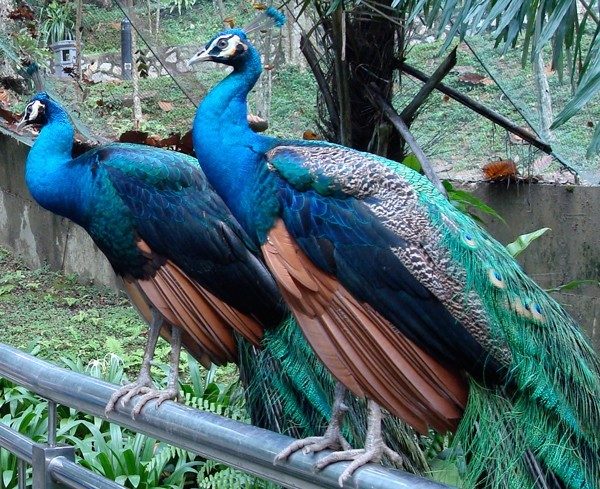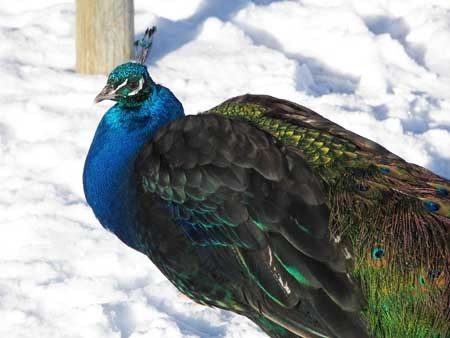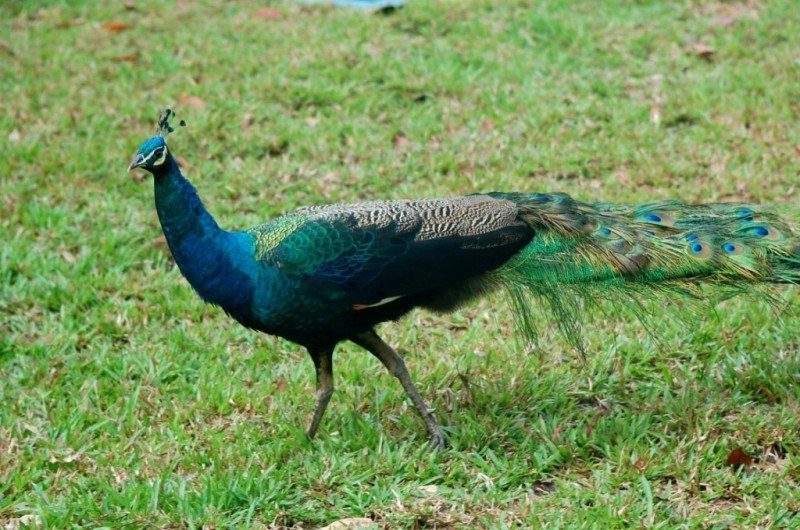Took pictures of these peacocks at San Diego Zoo on Sunday. Unforunately, they didn't turn out great(although one looks nice in a whole picture!).
This old looking fellow has similar coloring on the barred zone as in the opening post. Too bad the picture did not come out clear... but you should get the idea:

This guy up in a tree seems to have what some are saying is the sign of a black shoulder split:

I don't recall ever seeing a black shoulder at the zoo over the years though... has anybody seen and even better, taken picture or video of a black shoulder at the zoo?
Either split white or dark pieds were pretty common though- all males I saw showed some white feathers on wings, the peahens had their wings well tucked away,preventing any visible sign of white feathers so I couldn't tell if most or all of them had it too.
This old looking fellow has similar coloring on the barred zone as in the opening post. Too bad the picture did not come out clear... but you should get the idea:
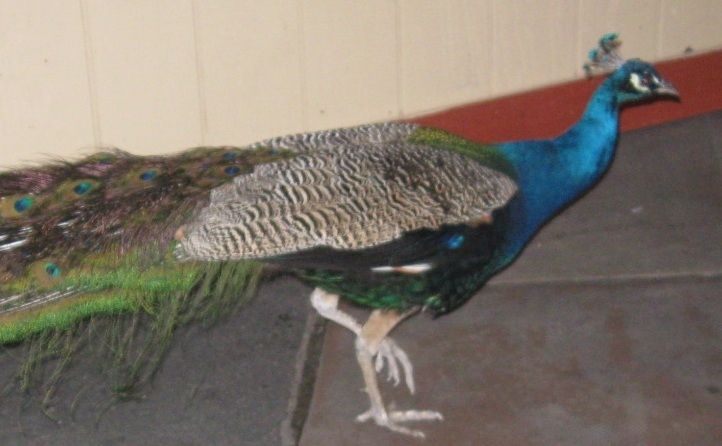
This guy up in a tree seems to have what some are saying is the sign of a black shoulder split:
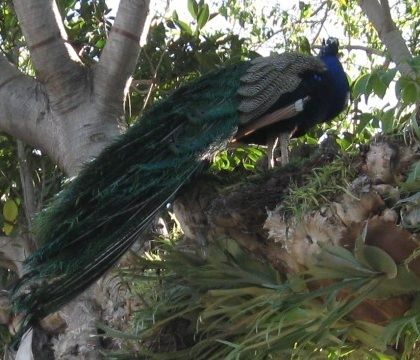
I don't recall ever seeing a black shoulder at the zoo over the years though... has anybody seen and even better, taken picture or video of a black shoulder at the zoo?
Either split white or dark pieds were pretty common though- all males I saw showed some white feathers on wings, the peahens had their wings well tucked away,preventing any visible sign of white feathers so I couldn't tell if most or all of them had it too.






